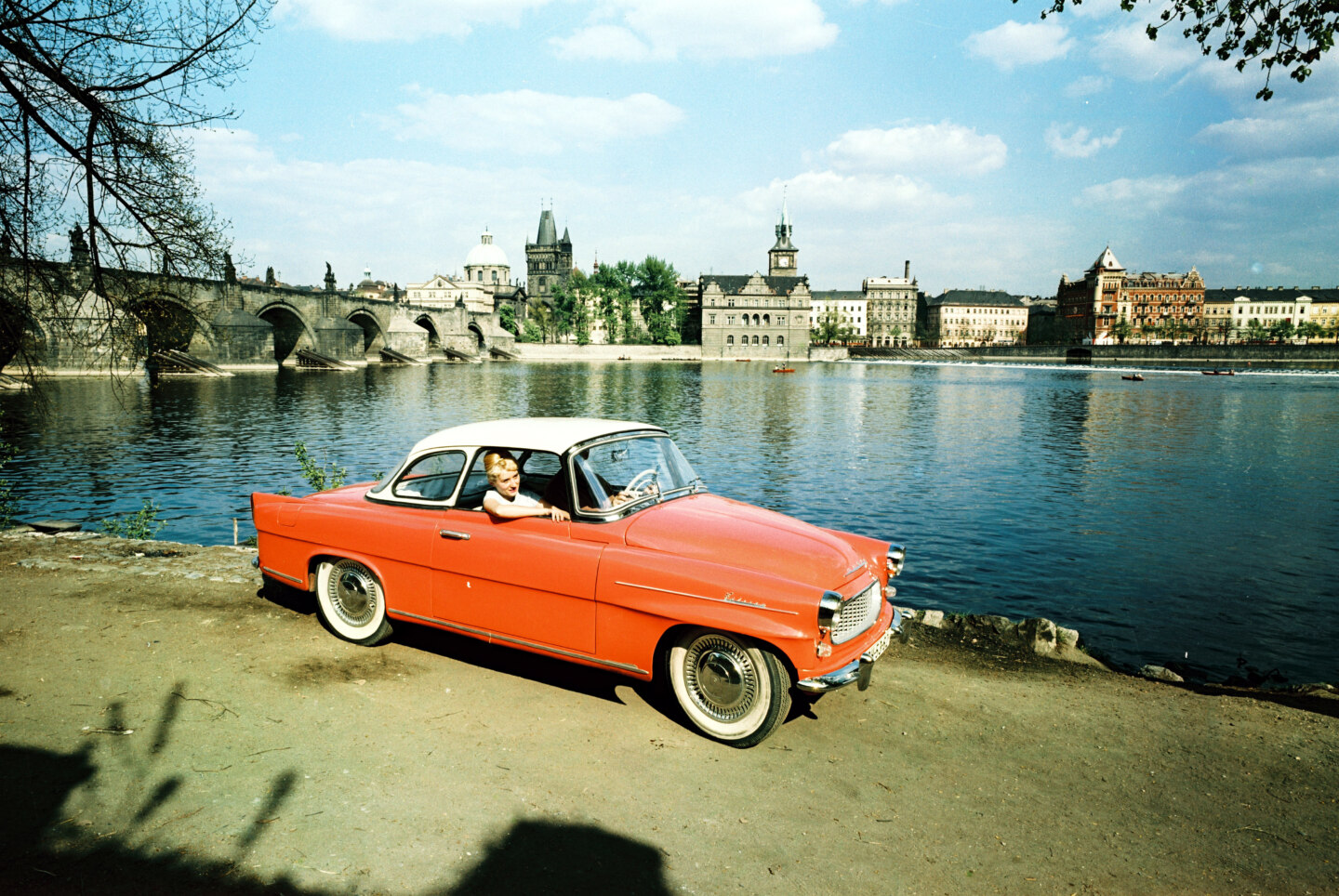25 Years with Hockey

ŠKODA is celebrating 25 years of bringing the fastest game on ice to fans all over the world with the IIHF World Championship. Like ŠKODA, modern hockey is all about speed and safety, grace and good engineering. Come skate with us and see how the game is played!
5. 5. 2017 Škoda World
Blink and You Might Miss It
Hockey has always been fast. But these days, it’s even faster than ever before.
“The game has speed up unbelievably,” says Slavomír Lener, a celebrated Czech coach and the current Head Coach of the Czech Ice Hockey Association. Lener has been on the rink and alongside of hockey greats such as Ivan Hlinka since the 1970s, won medals in the 1998 Nagano Olympics with the Czech team, coached in the NHL and has seen how the game has changed on the ice. “The speed, the physical battles, turnovers, and shots attract spectators.” The slower rhythm and fighting of earlier eras “has almost disappeared” and skill and speed now rule supreme.
“Players are more skillful, creative, faster, more agile,” says Lener. For spectators in the arena during a game, this means more thrills, more screams, and more excitement as their teams amaze audiences like never before. “Video technology even brings slow motion, high quality replay shots to the stadium” - and too the fans watching at home or in the pub. Even though hockey is lighting fast, you can watch and rewatch those thrilling moments that make the game so memorable over and over.
And though you might think the addition of commercial breaks would slow hockey down, players welcome the commercial break as well-earned pause, a chance to catch their breath, to think about the next face off, to get their legs ready for one more breakaway. Will the game ever slow down? Lener doesn’t think so.
“Hockey is still the fastest sport. It’s physically tough and demanding on the one hand, but on the other, it’s full of technique and creativity and all about skill and fairness. Hockey is a game full of unexpected reversals and unexpected situations, where the result can change in minutes, or even seconds.”
Almost as Fast as a ŠKODA OCTAVIA RS
Hockey is one of the fastest and most exciting sports on the planet, combining the grace of figure skating with the physical toughness of rugby or boxing. And nothing represents this combination of grace and brutality like the slapshot.
The “slapshot”, where a hockey player, puts all of their weight into the shot to get it to such high speeds was allegedly invented in the 1950s by Bernie “Boom Boom” Geoffrion, a tough French-Canadian defenseman playing for the legendary Montréal Canadiens. “Boom Boom” earned his nickname with his devastating shot, which sounded like a cannon when it hit the boards along the rink. During a time when nobody wore helmets, not even the goalies, Geoffrion’s invention was enough to terrorize his opponents. Nobody wanted to get in the way of his shot, especially without a mask, and Geoffrion became such a threat that the NHL changed the rules to deal with this new “slapshot”.
While Geoffrion’s shot was fast for the 1950s, nobody could have imagined how new technologies impacted the art of the slapshot.
According to Lener, one of the biggest changes to the slapshot has been the creation of new types of hockey sticks using advanced technology. “Thanks to composite hockey sticks, the speed of the puck has increased enormously,” Lener notes. “Their blades are flexible, and with the right technique, thanks to the stick’s flex, the shooter can create a kind of trampoline effect with the puck.” These new sticks also allow a player to “feel the puck” better, the only downside being that they are less durable than the old solid wood sticks.
And nobody uses these new technologies quite like Slovak defenseman Zdeno Chára, captain of the NHL’s Boston Bruins. Chára, perhaps the most fearsome defenseman in modern hockey, owns the current world record for fastest shot, which can travel over 175 km/h with a composite stick. Even with the state-of-the-art padding that hockey players wear, one slap shot from Chára will leave an impression that no one will ever forget.
Safety First!
ŠKODA vehicles have airbags. Hockey players don’t. How does a hockey player survive a game without such crash protection?
As legendary NHL star Mario Lemieux once said, “hockey is a tough, physical sport, and it should always be.” Getting slammed into the boards, blocking 150 km/h slapshots with your body, and the occasional fight has been a part of the game since its beginnings. But while hockey’s physical side remains a big part of its appeal, the IIHF and hockey leagues around the world are constantly searching for ways to balance hockey’s physicality with player safety.
In hockey’s early days players often played with little or no padding. Up until the 1930s players often wore little else besides shinguards, knee pads, and gloves. Injuries were common; players lost teeth, broke bones, or in tragic cases, suffered career ending injuries to their heads and necks. Helmets weren’t regularly worn by goalies until the 1960s; forwards and defensemen weren’t required to wear helmets until the end of the 1970s.
Players often resisted new protective gear, afraid that the extra weight would hinder their movement or affect their vision on the ice. But, just as in the automotive world, technological innovation changes everything. New materials and inventions, as well as pressure from the IIHF and NHL, has seen hockey equipment evolve dramatically, and now is safer and more comfortable than ever before.
For today’s hockey players, the pads and protective gear has improved enormously over the homemade shinguards and felt shoulder pads of hockey’s early decades. Slavomír Lener points out that today’s equipment is light years beyond what early players were wearing. “Equipment these days has become lighter and more flexible, including the skates and the boots, which offer more protection.” No longer does a player have to worry about getting cut from a skate or breaking bones in their feet while blocking a shot.
But Lener says the most important change in hockey equipment over the years are the players’ helmets and the plexiglass face shields, which protect the heads of both skaters and goalies alike. For goalies, these lightweight helmets not only protect against pucks, but also sticks and skates from players in close. For defensemen and forwards, these new helmets help protect the head from impacts. Many players these days also use a plexiglass face shield to protect their eyes from loose sticks. This translates into more fast paced action for the viewer and safer games for the players.






